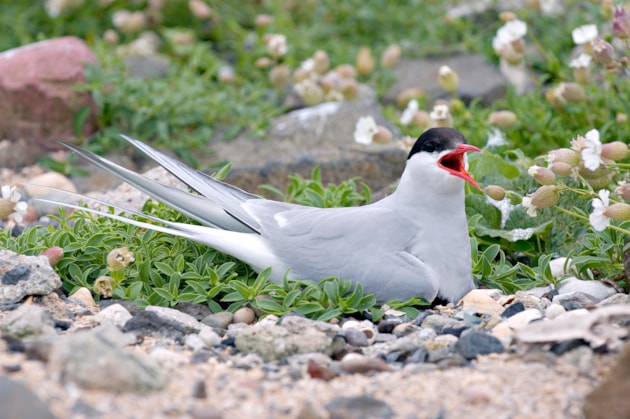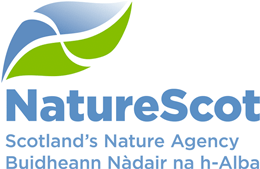01 May, 2025
Fresh drive to eradicate invasive mink from Outer Hebrides

A new project has secured vital funding for plans to protect internationally important bird populations by eradicating invasive mink from the Outer Hebrides once and for all.
Saving Nature Outer Hebrides will build on the work of the Hebridean Mink Project, which has significantly reduced the numbers of mink in the islands and prevented their spread, allowing many species to recover.
NatureScot, Comhairle nan Eilean Siar and Community Land Outer Hebrides, have now been awarded £94,000 from the Scottish Government’s Nature Restoration Fund (NRF) to develop a plan for complete eradication.
Saving Nature Outer Hebrides will draw on decades of experience and pull in expertise from other projects to design a new approach to the problem.
David Maclennan, NatureScot’s Head of Operations for West Scotland, said: “Thanks to the prolonged efforts of the Hebridean Mink Project, the mink population in the Outer Hebrides has been reduced to extremely low levels with significant positive consequences for ground nesting birds.
“It’s clear, however, that the existing level of trapping has not been enough to completely eradicate mink from the islands. We believe that while it will be challenging, total removal is feasible and in the long-term offers both the most effective protection for our native wildlife and the most cost-effective solution to the problem.
“This funding marks a step change in our approach. We are determined that this new project will learn from the past and make the changes required to maximise the chance of success in future.”
Murdo Mackay, Development Manager for Comhairle nan Eilean Siar, said: “CNES supports this initiative to ensure the benefits realised by the mink eradication project are protected and that final clearance of the few remaining animals can be achieved."
Kevin Adams, from Community Land Ownership Outer Hebrides (CLOH), said: “We are delighted to be partnering on this vital programme. The protection of our unique landscape in the Outer Hebrides is one of the top priorities for our members and CLOH. We look forward to collaborating on the programme and seeing the project deliver its objectives.”
ENDS
Contact information
- Name
- NatureScot Media
- Telephone
- 0131 316 2655
- media@nature.scot
Notes to editors
The Outer Hebrides are of national and international importance for their breeding populations of waders and other water birds. Five Special Protection Areas (SPAs) covering almost 150 km² have been designated to protect large numbers of breeding birds present in the islands.
American mink – an invasive non-native species - first arrived in the Outer Hebrides when fur farms were set up in Lewis in the 1950s, with feral animals recorded on Lewis by 1969. By 2001, mink had reached South Uist. Mink are voracious and opportunistic predators taking whatever prey is available to them - often killing more than they require for food at that time. The presence of the American mink and its spread across the Outer Hebrides threatened many bird populations.
NatureScot (then SNH) set up the Hebridean Mink Project in 2001 to prevent further significant disturbance and losses to ground nesting birds and migratory species found in SPAs. Between 2001 and 2006 the project was supported by the EU LIFE programme. Since 2006, the project has been mostly financed and managed by NatureScot, with some additional support from the Esmée Fairbairn Foundation, Comhairle nan Eilean Siar and Highlands and Islands Enterprise in the early stages.
The efforts of the Hebridean Mink Project have allowed numerous species to recover in both number and distribution. This includes species like terns and gulls, but also wader species such as oystercatcher, lapwing, curlew, snipe, dunlin and plovers as well as many duck species. The low level of mink also minimises additional predation effects on juvenile salmon and sea trout populations in Special Areas of Conservation (SACs).
In 2018 it was thought that the number of mink had been reduced to a level where the population was no longer functional. However, in recent years, around 20 - 30 mink per year have been trapped throughout the islands by the Hebridean Mink Project team.
NatureScot is Scotland's nature agency. We work to enhance our natural environment in Scotland and inspire everyone to care more about it. Our priority is a nature-rich future for Scotland and an effective response to the climate emergency. For more information, visit our website at www.nature.scot or follow us on X at https://x.com/NatureScot
’S e NatureScot buidheann nàdair na h-Alba. Bidh sinn a’ neartachadh àrainneachd na h-Alba agus a’ brosnachadh dhaoine gu barrachd suim a chur ann an nàdar. Tha e mar phrìomhachas againn gum bi nàdar na h-Alba beairteach agus gun dèilig sinn gu h-èifeachdach le èiginn na gnàth-shìde. Tha an tuilleadh fiosrachaidh aig www.nature.scot no air X aig https://x.com/NatureScot






